Did you know your most-prized Kalanchoe plant signifies persistence and eternal love through its gorgeous blossoms?
The succulent grows out of beautiful red, magenta, pink, orange, yellow and white flowers every year, accompanied by lush green leaves.
However, you must ensure optimal light, soil, and watering condition to get healthy re-blooms every year.
Generally, Kalanchoe is a succulent plant that thrives in well-draining, aerated soil with acidic content (6.0 to 6.5) that lets outs excess moisture and remains loose throughout. Similarly, they enjoy balanced plant food every month in the growing season.

It will boast dark green and waxy leaves with rich blossoms in the colorful cluster when grown accordingly.
Read on to find out how to prepare the best potting mix for Kalanchoe and ways to maintain an ideal soil condition.
Table of Contents
What Kind of Soil Does Kalanchoe Need and Why?
Kalanchoe, also known as Kalanchoe blossfeldiana, is a flowering plant widely found in many houses because it is low-maintenance and does well without regular watering.
Even though these plants are technically perennials, they are often treated as annuals and thrown away after the first flowers fade.
The plant will reblossom yearly when you provide it with optimal care and condition.

Kalanchoes naturally hail from the islands of Madagascar, where they ideally grow under the shade of tall trees.
A genus of about 125 species of tropical succulent plant in the stonecrop family Crassulaceae was only introduced in 1932 by Robert Blossfeld, a German hybridizer.
Regarding the optimal soil condition, it does well in a well-draining medium that does not retain much moisture.
Being a succulent, it holds water in the leaves and stems and recirculates it throughout the plant. Hence, they do not need constantly moist soil.
Find out how often to water your Kalanchoes Plant.
Therefore, you should ensure that your Kalanchoe grows in an appropriate potting mix made from reliable organic materials that promote quick drainage and healthy soil microbes.
| Factors | Specification |
|---|---|
| Soil Type | Well-drained and well-aerated potting soil (Preferably cacti mix with organic materials) |
| Soil Material | A high-quality potting mix of organic and inorganic materials such as peat moss, perlite, pumice, coarse sand or gravel, etc. |
| Soil pH Level | Slightly Acidic (6.0-6.5 pH) |
| Soil Compaction | None |
| Soil Drainage | 1-2 inches per hour It should dry out within one to one and a half days |
| Texture | Loamy and dark |
| Water Retention Capability | 25-45% |
| Soil Temperature | 50°F-70°F (10°C-21.1°C) during the day 45°F -65°F (7.2°C -18.3°C) during the night Nothing less than 40°F (4.4°C) in fall and winter |
| Supplementary Nutrients | Balanced proportion of nitrogen, phosphorus, and potassium (20-20-20) with micronutrients magnesium, calcium, sodium, iron, and zinc |
| Fertilization | Every two weeks or once a month in spring and summer with ½ or ¼ strength liquid fertilizer |
| Soil Toxicity | Pesticide and fertilizer salts like Aluminum, Lead, and Chromated copper arsenate will lead to soil toxicity |
| Soil Change | Every year |
When grown outdoors, preferably in USDA zones 10-12, Kalanchoe thrive in well-drained, sandy soil and under shade, away from direct sunlight.
You would know your Kalanchoe is doing great when it begins producing green, thick waxy leaves with yearly blossoms.
How to Ensure Ideal Kalanchoe Potting Soil?
If you have ever grown succulent, you will know what soil condition it requires to grow well.
Succulents like Kalanchoe are very different from other houseplants in terms of soil, moisture, and watering need.
Here is what you need to remember to ensure an ideal potting soil for your beloved plant.
1. Soil Moisture
Kalanchoe is quite picky about soil moisture, which requires relatively dry soil. They can go up to 1-3 months of no watering.
Too soggy succulent soil and the roots will drown in water, leading to oxidation, decay, and fungus growth.
The likelihood of soggy soil is greater because gardeners often overwater their plants.
Kalanchoe does better when the soil moisture is less but compact. You are mistaken if you believe succulents thrive in compact soil.

They need a potting mix that should dry up quickly, but it should remain porous and loose at all times to allow aeration.
Kalanchoe enjoys relatively dry soil, even up to 90%. Therefore, remember to use the correct potting medium that dries out within a day or two without becoming hard.
A fast-draining soil like the cactus mix will be appropriate for Kalanchoe to optimize oxygen, water, and nutrient intake from soil to stem and leaves via roots.
Ensure to water your plant only when more than 80% of soil has dried out, usually 14-21 days for indoor Kalanchoe plant.
Here is a dedicated watering calculator for the Kalanchoe plant.
2. Drainage Capacity of Soil
Kalanchoe potting soil should dry up quickly, usually within one to one and a half days, to stay healthy.
It requires well-draining potting soil that stays loamy and non-compact, allowing the roots to take in oxygen. It should let out excess water at 1-2 inches per hour to help the soil dry reasonably quickly.
Prepare a mix of organic and inorganic potting materials like peat moss, coarse sand, and perlite or pumice that adds air pockets in the soil.
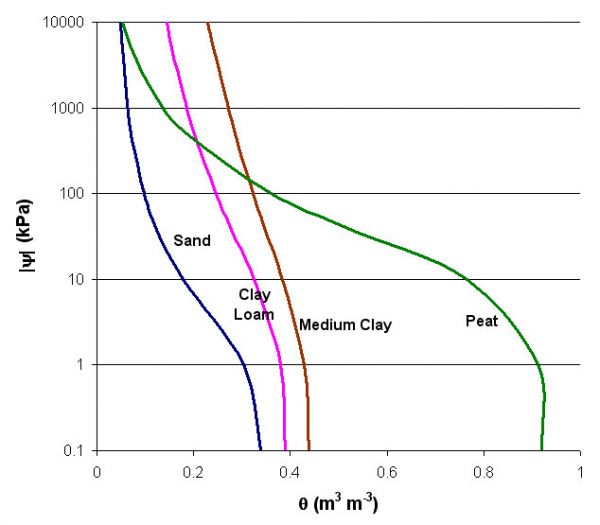
Another way to ensure the potting soil does not retain excess water is through the use of pots with multiple drainage holes at the bottom.
Choose clay or terracotta pots that naturally repel excess moisture. The plastic and ceramic pot will work too until it has multiple drainage holes at the bottom.
Similarly, water thoroughly but only once instead of frequent watering in a short time to let the soil dry in between.
3. Nutrients and Organic Matter
As Kalanchoes are flowering plants, they would benefit from regular fertilization; however, they do not need a lot of plant food.
A balanced houseplant fertilizer with a 20-20-20 or 10-10-10 NPK (Nitrogen, Phosphorous, and Potassium) ratio diluted to half or quarter strength applied every two weeks or once a month would suffice.
Excess fertilization will do more harm than good as the succulent’s roots may get overwhelmed with nutrients.
Always choose organic fertilizer packed with healthy microbes and bacteria to avoid the risk of root damage.
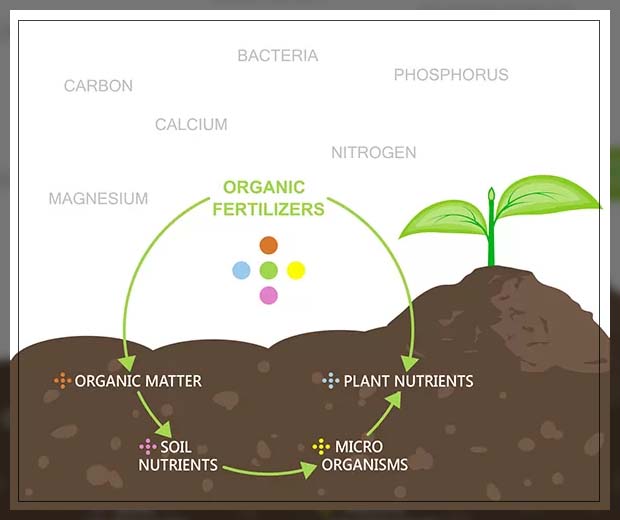
Here is a small table describing the nutrients essential for Kalanchoe plants.
| Essential Nutrients | Description |
|---|---|
| Macronutrients (Primary nutrients) | Nitrogen, Phosphorous, Potassium. |
| Micronutrients (Minor nutrients) | Iron, Boron, Chlorine, Copper, Zinc, etc. |
| Secondary Nutrients (Secondary nutrients) | Calcium, Magnesium, Sulphur, etc. |
| Microbes | Yeasts, algae, protozoa, bacteria, nema- todes, and fungi |
If flowering is sparse, especially in the growing season, consider switching to a fertilizer rich in phosphorus to boost blossoms.
However, be careful about using synthetic fertilizer, which may boost growth and lead to salt buildup in the soil.
4. Soil Compaction and Aeration
Succulents thrive in soil that dries up pretty quickly without losing aeration.
The same goes for Kalanchoe, which prefers to stretch its roots but falters when the soil is too dense to move through.
Therefore, soil compaction is a total No-No for the Kalanchoe plant.
Soil compaction refers to soil densification as air pockets are displaced from the pores between the soil grains.
It deprives the plant of oxygen and prevents the cation process (supply and consumption of nutrients).

Moreover, compaction will affect the soil drainage quality, leading to saturated potting medium and root rot.
Other signs include slowed growth, small leaves, and failed blossoms in the flowering season.
The soil compaction above 6 to 8 inches or 80% of the volume indicates severely compacted soil.
To avoid this, prevent over-fertilizing your plant and change soil every year.
In addition, loosen the soil now and then using a chopstick to poke holes around the soil gently.
5. Warm Soil Temperature
Most soil organisms function well at warm temperatures, usually 65°F to 86°F.
It impacts the nitrification rate, breaking nutrient molecules to make them quickly available to the plant roots.
It also influences soil moisture content, aeration, and the availability of other nutrients.
Kalanchoe plants do well in warm soil temperatures ranging from 50°F to 70°F during the day and 45°F to 65°F at night.

Anything below 40°F may hamper the soil’s ability to exchange nutrients, leading to stunted plant growth.
Therefore, Kalanchoes are best grown in USDA hardiness zones 10 to 12 with a minimum temperature of 40°F.
The temperature becomes a significant concern for outdoor-grown Kalanchoe because it will take longer for the soil to warm up.

Kalanchoes are sensitive to cold and may need frost protection throughout late fall and winter.
Pro Tip: Remember to find a warm location around the house with ample indirect sunlight for Kalanchoes.
6. Slightly Acidic Soil
A slightly acidic soil would be beneficial to Kalanchoes as it helps break down the nutrients in the soil available to the plant.
Alkaline soil releases sodium into the soil, while too acidic soil will prevent nutrient supply to the roots.
Therefore, a potting medium with a pH level between 6-6.5 would be most appropriate for the Kalanchoe plant.
Most flowering plants, like Kalanchoes, grow better in slightly acidic soil to retain the right amount of nutrients.
Adding organic elements such as compost, pine mulch, leaf mold, sulfur, and ammonium-based nitrogen will help obtain acidity in the soil.
However, beware of excess acidity, which may lead to aluminum and manganese poisoning.
Note: Keep a soil pH test kit handy to test and amend the soil whenever needed.
Prepping the Soil/Potting Mix for Kalanchoe
Remember, Kalanchoe is a succulent plant; succulents do not require a robust potting mix.
All they need is a potting medium that promotes aeration, dries up quickly, and does not compact over time.
Therefore, you can use a standard succulent mix or make one yourself at home.
Here is a list of items ideal for preparing a Kalanchoe potting mix.
| Materials | Benefits |
|---|---|
| Peat Moss | Retains soil moisture Holds Nutrients Enhances Soil Aeration |
| Perlite/Pumice | Makes soil light and porous Improves drainage Helps retain Water Improves aeration |
| Cactus Mix | It combines sand, gravel, pumice, and perlite. It promotes aeration and quick-drainage. |
| Potting Soil | To retain moisture and nutrients To hold other elements in place To provide anchorage for the roots |
Here are a few homemade potting mix recipes ideal for Kalanchoe plants.
#1 Recipe
- 50 percent potting soil
- Another 50 percent cactus mix
#2 Recipe
- 60 percent peat moss
- 40 percent perlite
#3 Recipe
- Three parts potting soil
- Another three-part coarse sand
- One part perlite
Plant your Kalanchoe in a clay pot to ensure proper drainage, which can help excess wick water from the soil.
Best Commercial Soil Mix for Kalanchoe Plant
Here is the list of a few commercial potting mix options for your Kalanchoe plant.
| Potting Mix | Benefits | Image |
|---|---|---|
| Hoffman 10404 Organic Cactus and Succulent Soil Mix | 1. Formulated with organic and inorganic material for cacti 2. pH balanced 2. comes with useful growing information |  |
| Espoma Organic Cactus Potting Soil Mix | 1. Appropriate for succulents, cactus, palm, and citrus 2. Contains a rich blend of sphagnum peat moss, humus & perlite 3. Improves aeration | 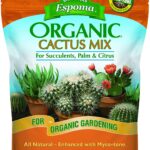 |
| Noot Organic Indoor Plant Soilless Potting Mix | 1. All-purpose mix for aroid and other houseplants 2. Contains 10-15-12 NPK fertilizer 3. Safe for pets and children |  |
| Espoma Organic Potting Soil Mix | 1. A rich blend of sphagnum peat moss, humus, and perlite 2. Supplemented with earthworm casting, alfalfa, and kelp meal | 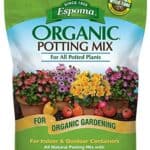 |
Problems of Poor Soil Condition in Kalanchoe Plant
Kalanchoe suffering from poor soil conditions will exhibit many different problems.
Check out for tell-tale signs that indicate the soil condition is wrong.
Here is the list of them.
1. Droopy Stem and Leaves
The under capability of the soil to drain water will lead to soggy problems in Kalanchoe plants. The prevalent indicator includes droopy stems and leaves.
However, overwatering may also lead to drooping foliage. Start with determining whether you have overwatered the plant.

Excessive water can quickly lead to roots and stems.
Therefore, immediately cut back on watering and let the soil dry to check whether the foliage returns to its natural state.
Note: Discard the plant with root rot problems and replace the soil with the fresh potting mix to treat soil compaction.
2. Yellowing Leaves with Stem Collapse
The Yellowing of Kalanchoe leaves with collapsing stems is mainly caused by poor drainage, water saturation, and incorrect soil type.
Generally, using an incorrect potting mix that contains clay and a significant amount of sand may prevent drainage, leading to water saturation.
Similarly, nutrient-less soil or the one that has not been fertilized in a while may exhibit drainage problems.
Start fertilizing your plant once every two weeks with 1/4 diluted liquid plant food or monthly with ½ diluted plant food in the growing season.
Otherwise, transplant it to a fresh potting mix made from a cactus mix or peat moss, perlite, and coarse sand and start monthly fertilization.
3. Severe Soil Compaction
Soil compaction in the Kalanchoe plant may occur for many reasons.
Overwatering the plant is one of the leading causes of compaction as it flushes out needed aerating materials from the soil.
A compact soil contains fewer air pockets to allow water to pass through the soil, leading to the waterlogged problem and possible root rot.

Similarly, using excessive synthetic fertilizer will also drain the soil of healthy microbes and aeration.
You may witness sick-looking plants with stunted foliage and stem growth.
The soil will be light-colored and feel hard to touch, where watering may lead to soaked problems and root rot. Consider changing the potting soil pronto!
Remember to use a soil moisture meter to check whether the soil is in an ideal condition.
Otherwise, consider aerating the soil using chopsticks or changing the soil altogether if the problem persists.
4. Stunted Growth
Kalanchoe may witness paused growth in the winter with some leaf shedding, which is quite normal.
If your Kalanchoe stops growing in spring or summer, you should know it is possibly under stress from watering, soil contamination, or root bound problem.
Overwatering is more familiar with the Kalanchoe plant, which can be treated by cutting back on watering.
On the other hand, soil contamination and root-bound problems may be more severe, requiring soil change or repotting.
Kalanchoe is a fast-growing plant that requires yearly repotting to expand its roots.
Therefore, consider repotting your plant every spring in a pot 2-3 inches bigger than the previous pot.
5. Fungal Infection
When you witness white powdery stuff on your Kalanchoe leaf, you should know it is the onset of powdery mildew.
Mildew is more familiar with Kalanchoe witnessing excess moisture. It is caused by the fungus Podosphaera xanthii, which may increase in warm temperature.
The fuzzy mycelium patches produce airborne spores that rapidly attack adjacent leaves.
Therefore, you should immediately treat your plant with an effective fungicide.
Wipe the affected part with horticultural oil and neem oil.
Otherwise, apply Chlorothalonil fungicide, which is quite effective in treating powdery mildew.
Does Kalanchoe Need Fertilizers?
Kalanchoe is a fast-growing succulent that will enjoy regular balanced plant food in the growing season.
Applying supplementary nutrition such as Nitrogen and Phosphorus will help achieve bushier leaf growth and blossoms in Kalanchoe.
Nitrogen, Phosphorus, and Potassium (NPK) boosts water regulation and immunity and encourage root growth.

Similarly, it needs micronutrients and trace minerals such as iron, nickel, zinc, manganese, calcium, sulfur, and magnesium to maintain a healthy root and sound immune system.
However, ensure to dilute the liquid plant food before applying and fertilize it once a month during spring and summer to prevent over-fertilization.
Signs Your Kalanchoe Needs Fertilizing
An under-fertilized Kalanchoe is hard to figure out because it would not show vivid signs like other houseplants.
If flowering is sparse, you should know the plant lacks phosphorus. Similarly, slowed vertical growth, yellow leaf tips, and less bushy foliage may indicate low nitrogen.
The dull appearance of the foliage and discolored patches on the leaves is due to potassium deficiency.
On the other hand, drooping leaves, stunted growth, stem decay, and discolored soil indicate an over-fertilized plant.

Best Commercial Fertilizer for Kalanchoe Plant
Remember to check the fertilizer status such as NPK ratio, ingredients, and manufacturer guide before buying it, and strictly avoid synthetic fertilizers that come cheaply.
Here is the list of commercial organic fertilizers considered best for the Kalanchoe plant.
| Fertilizer | Benefits | Image |
|---|---|---|
| EZ-gro 20-20-20 Fertilizer | 1. All-purpose 20-20-20 fertilizer appropriate for the Pilea plant. 2. Encourage large leaf growth and green vegetation. 3. Packed with a micronutrient package |  |
| Miracle-Gro All Purpose Plant Food | 1. All-purpose plant food with a balanced NPK ratio. 2. Entirely safe for the plant. 3. Water-soluble property prevents root burn and works instantly |  |
| Bonide Liquid Plant Food | 1. All-purpose plant food with a 10-10-10 NPK ratio. 2. Just mix 1/8 tsp of concentrate into one quart of water. | 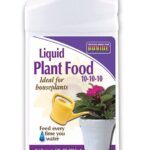 |
You can also opt for slow-release fertilizer applied once every three months in the growing season.
Spread Osmocote Smart-release plant food pellets over the soil and water it thoroughly.
Watch the video for more information,
How to Create Homemade Organic Fertilizer for Kalanchoe?
If you do not believe in commercial products, you can prepare your own homemade organic plant food using kitchen scraps, leaves, brown materials, etc.
The organic content naturally contains less NPK ratio, preventing salt buildup in the soil, while the organic matter will boost healthy soil microbes.
| Types | Features | Limitations |
|---|---|---|
| Kitchen Scraps | Helps with moisture retention Slow-release | The smell may be unbearable with time. |
| Weeds | High in nitrogen content | If the seeds and roots of the weed are not deadheaded properly, they can reproduce. |
| Manure | Good amount of nitrogen Helps in water retention | Can be too acidic for the soil if not composted |
| Tree Leaves | Makes the soil lighter Full of trace minerals | It can lead to nitrogen deficiency for a short period of time. |
| Eggshells | Lowers the acid content Increases calcium in the soil | Their sodium content can harm the plant |
| Coffee Grounds | Increases the acidic content in the soil | Root growth can be hindered |
| Banana Peels | Rich in potassium content | Decomposes very slowly |
Prepare Homemade Organic Fertilizer
- Collect all the green (kitchen scrap, bones, and coffee ground) and brown materials (dry leaves, twigs, straw).
- Using a compost bin, mix all the items and add water to them.
- Regular aerate the compost by turning the layers by hand or using a wheelbarrow to let it decompose.
- Continue the process for a few months until the manure becomes dry granular.
How to Apply the Fertilizer to Kalanchoe?
- When using liquid plant food, dilute the solution to ½ or ¼ strength (per manufacturer’s guide) by mixing with water.
- Pour the solution directly over the soil but keep it at least a few inches away from the plant root to prevent root burn.
- In case of using granular plant food, spread the pellets over the soil and water it thoroughly.
- Aerate the soil with homemade compost in spring and summer. Otherwise, layer it over the top soil and thoroughly water it.

Conclusion
Your Kalanchoe will best thrive in well-drained, aerated soil containing organic and inorganic materials.
Usually, a 60% peat moss and 40% perlite would work well, but you can always experiment with the potting mix materials.
Remember, these are succulents that hold water in their leaves and stems. Therefore, use a soil mix that does not retains excess moisture.
When the soil and growing environment are perfect, your plant will produce lush dark green leaves and small, four-petaled flowers in clusters.
Related Article: How to Get Your Kalanchoes to Rebloom?
